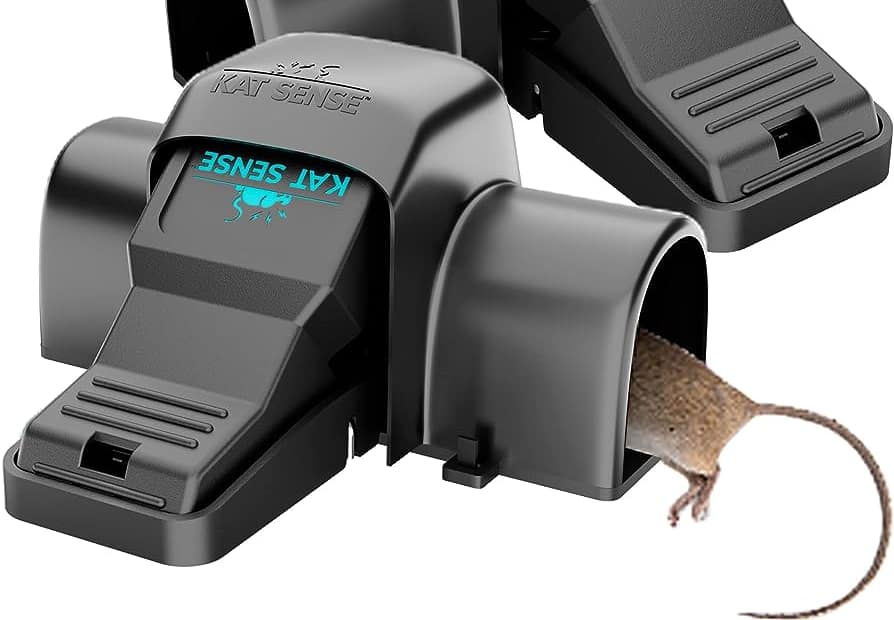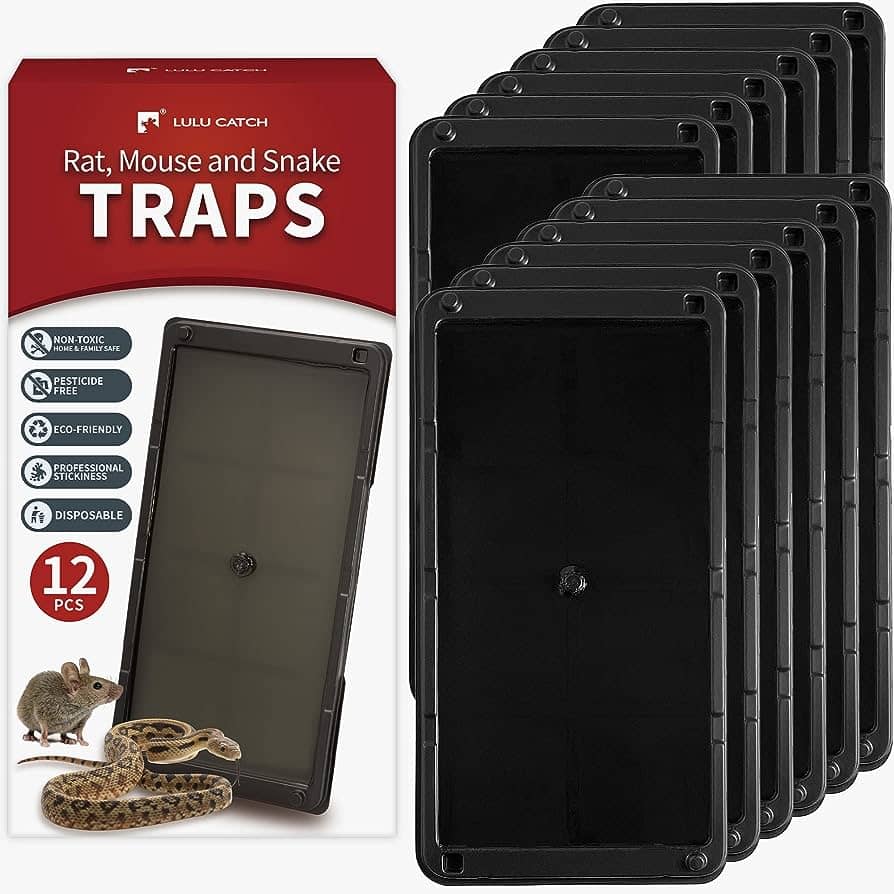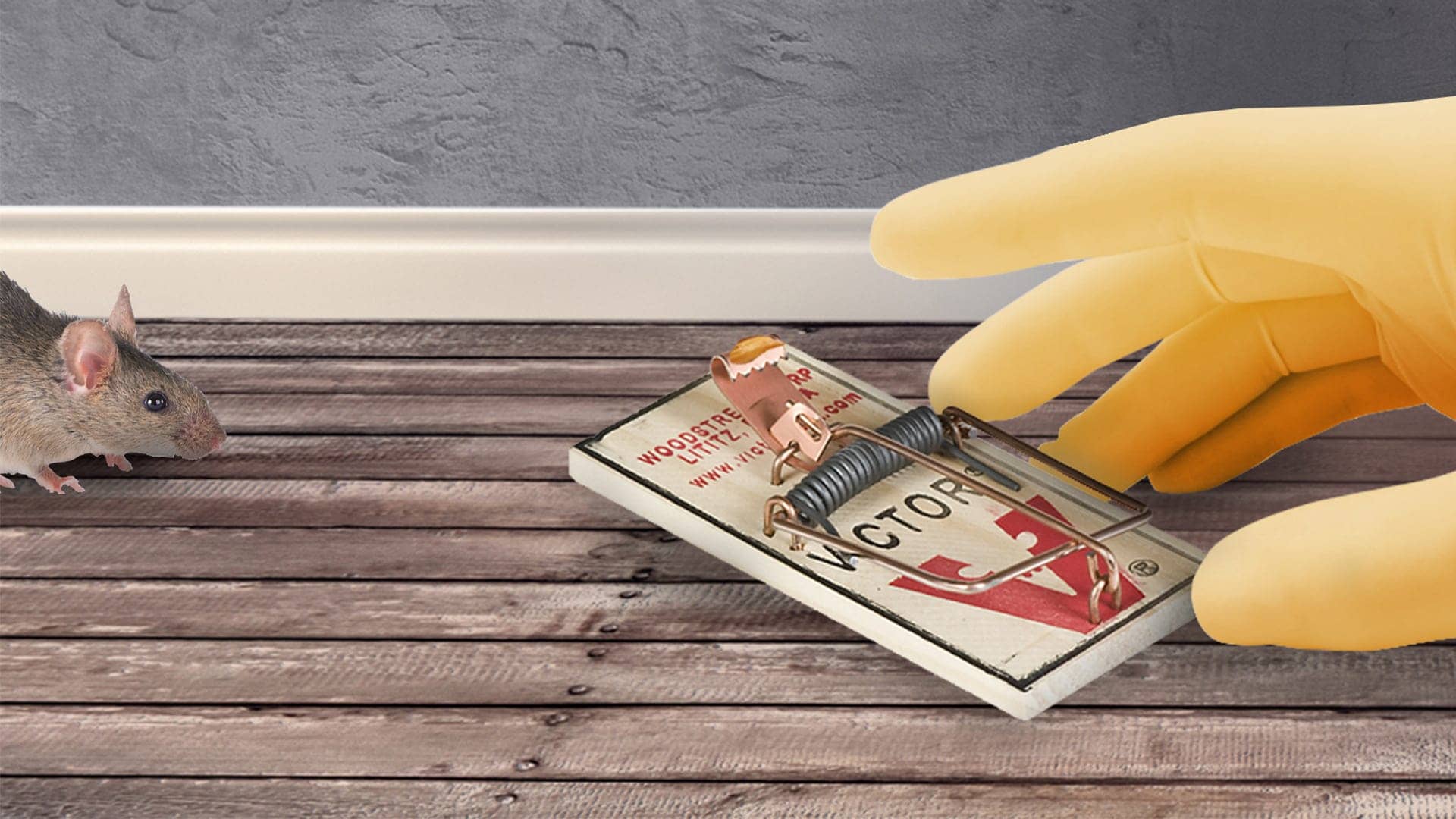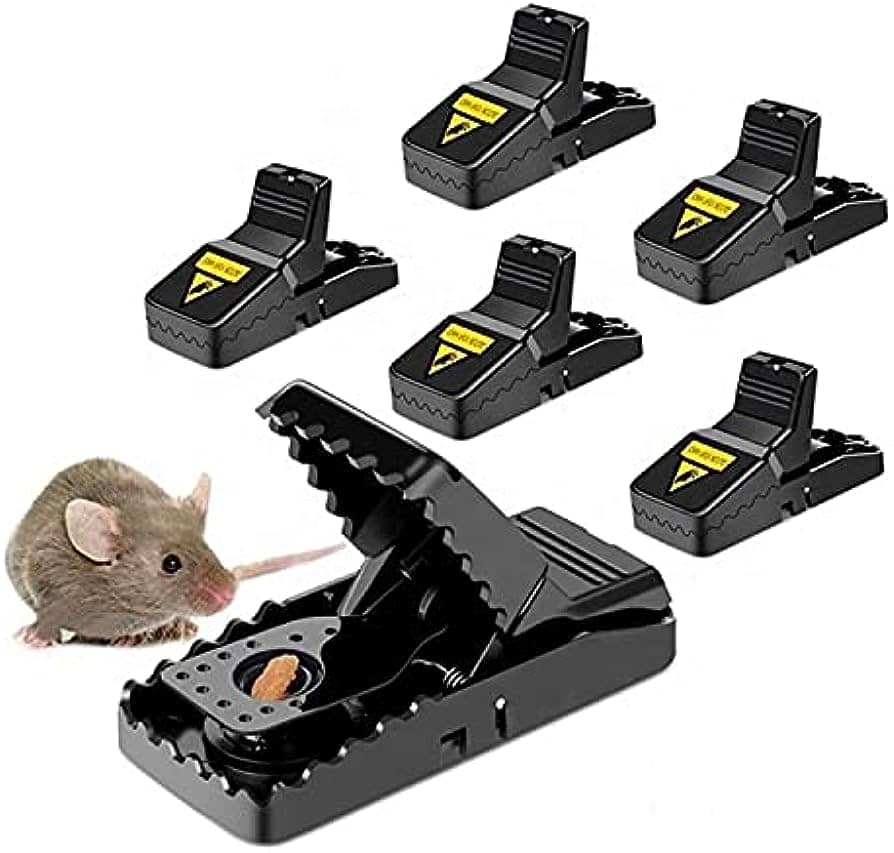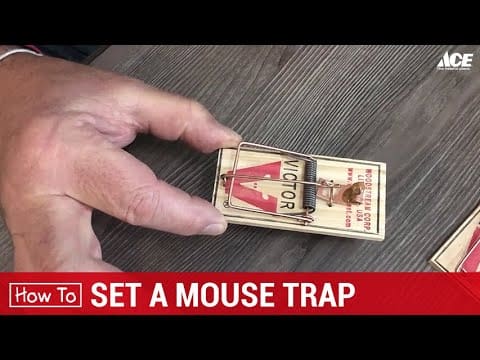To prevent accidental injuries with mouse traps, take precautions such as placing them in secure and out-of-reach locations and using bait that doesn’t attract children or pets. Accidental injuries can be avoided by following these key steps when using mouse traps.
Mouse traps are effective tools for controlling mice populations, but they can also pose a risk of accidental injuries. It is essential to take proper precautions to prevent harm to children, pets, and even adults. By following a few simple steps, you can minimize the chances of accidental injuries while still effectively catching mice.
This article will provide guidance on how to safely set up and use mouse traps to prevent any unwanted incidents. From selecting the right location to choosing the appropriate bait, these tips will help ensure that your efforts to get rid of mice are successful without causing any harm to yourself or others. So, let’s dive in and learn how to prevent accidental injuries with mouse traps.
1. Types Of Mouse Traps For Preventing Accidental Injuries
Prevent accidental injuries with a range of mouse trap options designed to keep you and your household safe. Choose from various types of mouse traps specifically designed to prevent harm and ensure a humane capture and release process.
Types Of Mouse Traps For Preventing Accidental Injuries
Mouse traps are essential tools for preventing the entry and infestation of mice in our homes and workplaces. However, it is equally crucial to choose the right type of trap that not only effectively captures mice but also prevents accidental injuries.
Let’s take a closer look at some of the different types of mouse traps available:
Traditional Snap Traps
- Classic and widely used mouse traps.
- Consist of a wooden base and a spring-loaded metal bar designed to snap shut when triggered.
- Ensure to place these traps in areas inaccessible to children and pets to prevent accidental injuries.
- Can cause harm if not handled with caution.
Electronic Traps
- Use advanced technology to offer a safer and more efficient mouse-elimination process.
- Emit an electric shock that immediately kills the mouse upon contact.
- Some models feature enclosed chambers that prevent accidental contact with the mouse.
- Requires batteries or an electrical outlet for operation.
Glue Traps
- Sticky adhesive surfaces designed to trap mice upon contact.
- Ensure to place these traps away from children and pets, as they may accidentally touch the glue and cause injuries.
- Effective in capturing small mice, but not recommended for larger rodents.
- May not instantly kill the trapped mouse, potentially leading to ethical concerns.
Humane Traps
- Aim to capture mice without causing them any harm.
- Consist of a cage or container that confines the mouse after triggering the trap.
- Allow for safe release of the captured mouse into its natural habitat.
- Ideal for those looking for non-lethal and compassionate methods of dealing with mouse infestations.
Remember, when it comes to preventing accidental injuries, always prioritize the safety of your loved ones, including children and pets. Choose a mouse trap that aligns with your needs and preferences while ensuring that it poses minimal risk of accidental harm.
Stay informed and take appropriate measures to maintain a safe environment for everyone involved.
2. Factors To Consider When Choosing A Mouse Trap
When selecting a mouse trap to prevent accidental injuries, consider factors such as effectiveness, humane methods, durability, and ease of use.
Factors To Consider When Choosing A Mouse Trap
When it comes to choosing a mouse trap, several factors should be taken into consideration. Here are the key aspects you need to keep in mind:
Effectiveness:
- Snap traps: This traditional type of mouse trap is known for its high success rate. It snaps shut quickly when triggered, effectively trapping the mouse.
- Electronic traps: These traps deliver a quick electric shock to the mouse, instantly killing it. They are highly effective and can catch multiple mice before needing to be emptied.
Safety:
- Non-toxic options: If you have children or pets in your home, it’s important to choose a trap that is safe for them. Look for traps that are non-toxic and do not pose any harm to your little ones.
- Sensitive triggers: Opt for traps with sensitive triggers to minimize the risk of accidentally triggering the trap with household objects or when setting it up.
Ease Of Use:
- Easy set-up: Choose traps that are easy to set up and do not require any complicated procedures. Look for traps that can be easily baited and set with a simple click or lever.
- Quick disposal: Consider traps that provide easy and hygienic disposal methods. Some traps allow for easy release of the trapped mouse without touching it, while others have removable trays for effortless cleaning.
Budget-Friendly Options:
- Traditional snap traps: These classic traps are not only effective but also budget-friendly. They are widely available and have a low cost per unit.
- DIY traps: If you’re on a tight budget, you can explore various DIY trap options using household items like empty soda bottles or buckets. However, keep in mind that these may not be as efficient as store-bought traps.
Eco-Friendly Traps:
- Humane traps: If you prefer not to harm the mice, there are humane traps available. These traps capture the mice alive and can be released safely in a different location.
- Biodegradable traps: Consider traps made from biodegradable materials that are environmentally friendly. These traps minimize waste and are a sustainable choice for pest control.
By considering the effectiveness, safety, ease of use, budget-friendliness, and eco-friendliness of different mouse traps, you can select the most suitable option for your needs. Remember to assess your specific situation and preferences before making a decision. Keep these factors in mind to prevent accidental injuries and effectively address any mouse infestations you may be facing.
3. Best Practices For Using Mouse Traps Safely
Prevent accidental injuries when using mouse traps by following these best practices for safe usage. Ensure that the traps are set in secure locations, away from children and pets, and always handle them with caution to avoid any potential harm.
Best Practices For Using Mouse Traps Safely
Placing traps in strategic locations:
- Position traps along walls and near areas where mice are likely to travel, such as behind appliances or in dark corners.
- Consider placing traps in areas of high mouse activity, like near food sources or nesting spots.
- Use multiple traps to increase the chances of catching mice effectively.
Keeping traps out of reach of children and pets:
- Ensure that traps are placed in areas inaccessible to children and pets, such as under furniture or behind closed doors.
- Place traps in secure locations, such as inside bait stations or covered with a protective barrier.
- Always supervise children and pets around areas where traps are set.
Regularly checking traps and disposing of captured mice:
- Check traps frequently, at least once a day, to minimize the suffering of trapped mice and ensure timely removal.
- Wear gloves or use a tool to handle the trap safely when disposing of captured mice.
- Release trapped mice in a suitable outdoor location far from your home, following local regulations.
Properly cleaning and disinfecting traps:
- After disposing of a captured mouse, clean and disinfect the trap to maintain hygiene and prevent the spread of diseases.
- Use a mixture of bleach and water, or a household disinfectant, to clean the trap thoroughly.
- Rinse and dry the trap before reusing it or storing it for future use.
Using caution when handling traps:
- Read and follow the manufacturer’s instructions before setting up traps.
- Always approach traps with care, ensuring your fingers are not near the snapping mechanism.
- Place traps in positions that minimize the risk of accidental triggering, ensuring they are stable and secure.
By implementing these best practices for using mouse traps safely, you can effectively control mouse infestations in your home while mitigating the risks associated with trap usage. Remember to always prioritize safety and handle traps responsibly for a successful and accident-free experience.
4. Tips For Preventing Accidental Injuries With Mouse Traps
Discover these essential tips for preventing accidental injuries when using mouse traps. By following these guidelines, you can effectively safeguard against any harm and ensure the efficient and safe trapping of mice.
Tips For Preventing Accidental Injuries With Mouse Traps
Mouse traps are a practical and effective solution for dealing with unwanted pests. However, it is essential to take precautions to prevent any accidental injuries that could occur, especially if you have children or pets in your home. Here are some tips to ensure the safety of everyone in your household:
Securing Traps In Inaccessible Areas:
- Place traps in areas that are out of reach for children and pets, such as behind furniture or inside cabinets.
- Use sealed containers or lockable boxes to make sure the traps cannot be accessed accidentally.
Using Bait That Does Not Attract Children Or Pets:
- Choose bait options that are not enticing to children or pets. Peanut butter is a popular choice as it attracts mice but is less appealing to other creatures.
- Avoid using baits with strong odors that could attract animals or curious children.
Ensuring Traps Are Stable And Cannot Be Tipped Over:
- Set up traps on stable surfaces, ensuring they cannot be easily knocked over.
- Place traps against walls or in corners to minimize the chance of unintentional tipping.
Properly Disposing Of Captured Mice To Prevent Diseases:
- Always wear gloves when handling captured mice to avoid direct contact with any potential diseases or parasites.
- Take the captured mice to an appropriate disposal site, such as a sealed bag in an outdoor bin or your local waste management facility.
Taking Additional Precautions For Outdoor Use:
- Place outdoor traps in areas not accessible to children, such as behind shrubs or in locked enclosures.
- Consider using weather-resistant traps specifically designed for outdoor use to ensure longevity and effectiveness.
Considering these safety tips when using mouse traps will help prevent accidental injuries and ensure the well-being of everyone in your household. Remember to always exercise caution and be mindful of the potential risks involved. Stay safe and pest-free!
5. Common Mistakes To Avoid When Using Mouse Traps
Prevent accidental injuries while using mouse traps by avoiding these common mistakes. Ensure proper placement, use bait effectively, regularly check and dispose of trapped mice, avoid touching traps with bare hands, and keep traps out of reach of children and pets.
Common Mistakes To Avoid When Using Mouse Traps
Placing traps in areas without mouse activity:
- Before setting up mouse traps, it is essential to identify areas where mice are frequently active. Placing traps randomly in your home or office will not yield effective results. Take some time to observe and detect their presence by looking for droppings or gnawing marks.
- Once you have identified the mouse activity areas, focus on placing traps near their entry points, such as gaps in walls, holes in foundations, or under kitchen cabinets. This strategic placement increases the likelihood of trapping them effectively.
Using inadequate bait or not refreshing it regularly:
- Choosing the right bait is crucial for successful trapping. Commonly used baits include peanut butter, cheese, or chocolate. Mice have a strong sense of smell, so opt for baits with a pungent odor.
- Remember to refresh the bait regularly to maintain its potency. Mice are attracted to fresh, enticing smell. As time passes, the bait loses its appeal, reducing the chances of trapping the mice.
Neglecting to check traps frequently:
- It is essential to check your traps regularly – ideally every 12 to 24 hours. Neglecting this step can lead to several issues. Firstly, a trapped mouse might suffer unnecessarily for an extended period. Secondly, a caught mouse can give off an unpleasant odor, attracting other pests.
- Regularly checking the traps allows you to remove any trapped mice promptly. It also ensures that the traps are still functional and in good condition.
Using traps that are not suitable for the environment:
- Choosing mouse traps appropriate for your specific setting is crucial. Different traps work better in different environments. For example, snap traps are effective indoors, while glue traps work well in more confined spaces.
- Consider the size of the area you need to cover and the severity of the infestation. Research and select traps that are specifically designed for your environment to maximize their efficiency.
Failing to properly dispose of captured mice:
- After successfully trapping a mouse, it is important to handle its disposal with care. Merely releasing the mouse near your property can result in its return or the invasion of neighboring areas.
- Instead, follow proper protocols for mouse disposal. Wear protective gloves and place the mouse in a sealed bag before discarding it in an outdoor trash bin. This ensures the mouse is removed from your property safely and prevents the spread of potential diseases.
By avoiding these common mistakes, you increase the effectiveness of your mouse traps. Remember to strategically place traps based on mouse activity, regularly refresh bait, check traps frequently, use suitable traps for your environment, and dispose of captured mice properly.
Happy trapping!
6. Steps To Take If Accidental Injuries Occur
If accidental injuries occur, it is important to take immediate steps to address the situation. By using mouse traps, you can effectively prevent accidental injuries and promote a safer environment.
Accidents happen, even with the best safety measures in place. In the unfortunate event of an accidental injury caused by mouse traps, it’s important to take immediate action. Here are six steps you should follow if accidental injuries occur:
Seeking Immediate Medical Attention:
- Prioritize your health and well-being by seeking immediate medical attention after an accidental injury from a mouse trap. Prompt medical care can help prevent further complications and ensure proper treatment.
Properly Cleaning And Disinfecting The Affected Area:
- Thoroughly clean the affected area around the injury site. Use mild soap and warm water to gently cleanse the area, removing any debris or contaminants. After cleaning, apply a disinfectant to prevent infection.
Inspecting Traps For Any Defects Or Malfunctions:
- Take a moment to inspect the mouse trap involved in the accidental injury. Look for any defects or malfunctions that may have contributed to the incident. This step can help pinpoint any issues with the trap and prevent future accidents.
Reporting Any Product-Related Injuries:
- It’s essential to report any product-related injuries to the manufacturer or relevant authorities. By doing so, you contribute to the safety improvement of mouse traps and raise awareness about potential risks.
Educating Others On Safe Mouse Trapping Practices:
- Share your experience and knowledge with others to promote safe mouse trapping practices. Educate people on the importance of using traps correctly, handling them responsibly, and implementing necessary precautions. By doing this, you can help prevent future accidental injuries.
Remember, accidents can occur despite taking precautions. However, by following these steps, you can minimize the impact of accidental mouse trap injuries and contribute to a safer environment for everyone. Stay safe and informed!
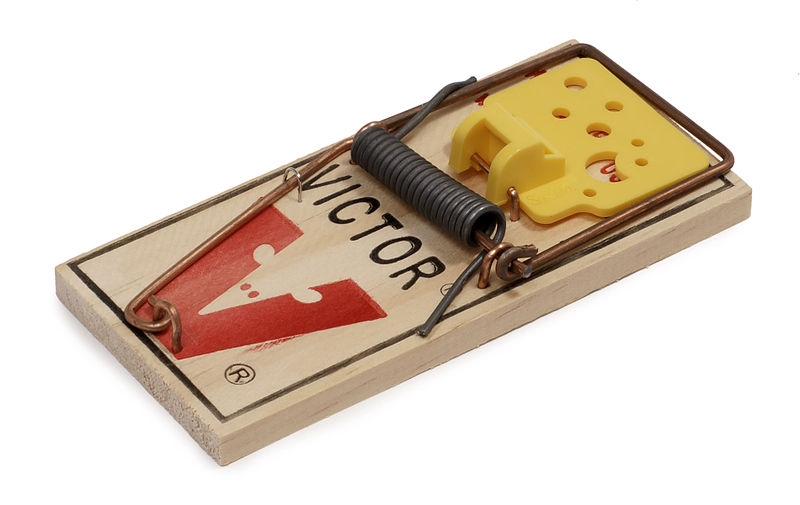
Credit: en.wikipedia.org
Frequently Asked Questions On Preventing Accidental Injuries With Mouse Traps
What Happens If You Get Hit By A Mouse Trap?
A mouse trap can cause injury, such as finger or hand pain, if it snaps on you.
Should You Wear Gloves When Setting Mouse Traps?
Yes, it is advisable to wear gloves when setting mouse traps to protect your hands and prevent the spread of diseases.
How Do You Trap A Mouse Without Hurting It?
To trap a mouse without hurting it, use a humane trap with bait and release it far from your home.
Can You Touch A Mouse Trap With Your Hands?
Yes, it is not recommended to touch a mouse trap with your hands due to potential injury.
Conclusion
Mouse traps play a vital role in preventing accidental injuries caused by mice infestations. These devices are efficient and effective in capturing and eliminating mice from homes, offices, and other spaces. By using mouse traps, you can avoid potential health risks and property damages associated with rodents.
The careful placement of traps in strategic locations can significantly reduce the chances of encountering mice. Remember to choose the right type of trap for the specific mouse problem you are facing. Whether it’s a snap trap, glue trap, or live trap, each has its own advantages and disadvantages.
Additionally, regular inspection and maintenance of the traps ensure their functionality and efficacy. A clean and safe environment is not only beneficial for human health but also prevents unnecessary damage to valuable belongings. Don’t wait until it’s too late, take proactive measures to prevent accidental injuries by investing in mouse traps today.
